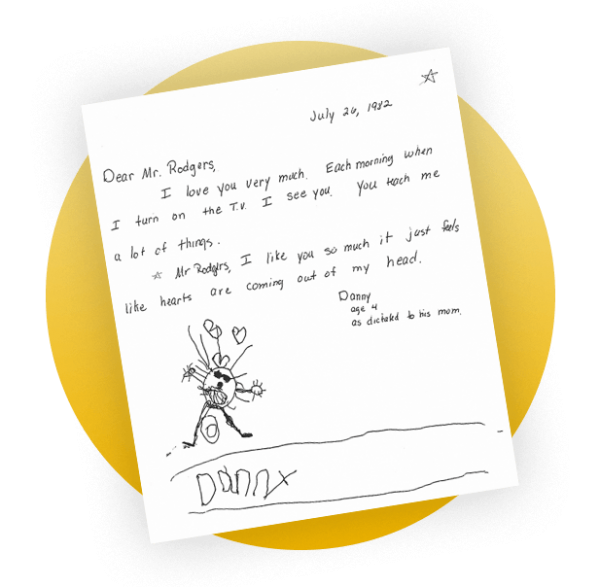This isn’t a “show.” It’s a “television visit” with Mister Rogers, who spent years learning about children, and working directly with them.
Some joked Mister Rogers’ Neighborhood was the first “reality tv” because unlike most television shows, it is honest. It moves in real time and doesn’t cover up its mistakes. Deliberately calm and unhurried, the pace and honesty sets the tone for this time together – that’s the best atmosphere for sharing ideas, thoughts and feelings.
Right from the start, from the moment Mister Rogers enters, it’s real time. He comes through the door welcoming us with “Won’t you be my neighbor?” Then he takes the time to walk to the closet, methodically taking off his jacket and hanging it up, putting on his sweater and sneakers – all before he starts talking with us. With that ritual, he’s giving us time to settle in before our “visit” officially begins.
As a writer once noted: “A young viewer watching Mister Rogers change into his playtime sneakers cannot help sensing that here is a man who’s willing to meet the child halfway. That one action tells him that Rogers has a grown-up life of his own somewhere else, but that he has set aside this time to pay full attention to the child’s concerns.”
Television is considered a mass medium, designed to reach a large audience. A visit to “Mister Rogers’ Neighborhood” made television a personal medium. When Mister Rogers looked into the television camera he was talking to only one person. And everything he did was grounded in respect for the individual needs, feelings and inner dramas of each child watching.
‘Inclusion’ was superfluous to his vocabulary, because inclusion was embedded in the lived world of his television neighborhood.
There’s lots of quiet time, too. Fred Rogers used to say there’s not enough quiet in the world, so he wanted to give children silence within the program itself. It’s no wonder TV Guide once described Mister Rogers’ Neighborhood as “an oasis of quiet amid the clamor of children’s television.”
The clear message with that time, pacing and silence is that what we as the viewer bring to the experience is important too. This is indeed a “visit” between neighbors.
Fred Rogers is the Dalai Lama of television.
“I’ve met a lot of stars on the TV beat, but a deservedly beloved Pittsburgh star is the only performer I can say truly taught me something about doing my job — and maybe about living my life.
Years ago, I spent a day on the set of Mister Rogers’ Neighborhood. The scene they were shooting was simple. Fred Rogers was supposed to sit at a table, drink a glass of juice and then move on to another part of the set. When he finished shooting the scene, however, Rogers realized he couldn’t finish the juice in the time allotted. So he asked for another, non-see-through glass, so children wouldn’t see him leaving a half-filled glass on the table.
The director objected, saying kids would never notice, and it wouldn’t make any difference if they did. But Rogers said wasting juice sent the wrong message to his audience, and then simply repeated his request, patiently but firmly, and in a tone that made it clear he would not change his mind. He got his glass.
There’s a lot of Fred Rogers boiled down in that story: his attention to detail, his dedication to the work, his sense of responsibility for its effects, his moral authority, his willingness to exercise power, and his skill at doing so graciously.”
I like you so much
it feels like hearts are
coming out of my head.
